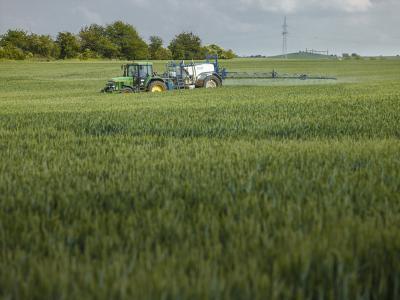In Europe, the presence of toxic chemicals has been considered a localized problem affecting only a few bodies of water but a new paper says there are large scale ecological risks for several thousands of European aquatic systems. The culprit: toxic chemicals.
They say that chemical toxicity represents an ecological threat to almost half of all European bodies of water, and in approximately 15% of cases, the biota in freshwater systems may even be subject to acute mortality.
The Water Framework Directive (WFD) by the EU is unlikely to be met due to the high levels of toxicants in the water bodies, say the authors from the Institute for Environmental Sciences Landau, the Helmholtz Centre for Environmental Research, University of Lorraine and the Swiss Federal Institute of Aquatic Science and Technology. One of the reasons: current measures for the improvement of water quality do not account for the effects of toxic chemicals. They write that the ecological risks posed by toxic chemicals are considerably greater than has generally been assumed.

Agriculture is part of Europe's cultural heritage. It made Europe great, and today Europe accounts for 85% of all the world's food subsidies, so they can keep European farmers employed. It's also killing streams and rivers, according to a new paper. GMOs would obviously require fewer chemicals but Europeans prefer 19th century methods. Photo: André Künzelmann, UFZ
Actual state of European aquatic ecosystems may be even worse
The authors investigated the exceedance of risk thresholds in the river basin of major stream networks, such as the Danube and the Rhine River at a pan-European level. The extent to which risk thresholds were exceeded for three groups of organisms, namely fish, invertebrates and algae / primary producers, was estimated for these major river basins.
The data used originated from official water monitoring activities of recent years. The scope of sampling consequently varied significantly in terms of spatial coverage, as well as timing, therefore, direct comparison(s) between different countries proves rather difficult. For example, the study finds, that water quality is worst in France, presumably due to the fact that authorities in this country installed a dense monitoring network and analyzed water samples for a multitude of substances, including the ecotoxicological relevant compounds.
In other countries, by contrast, risks may remain unrecognized due to inadequate sensitivity in chemical analysis or an incomplete list of ecotoxicologically relevant monitoring compounds.
"Generally speaking we probably underestimated rather than overestimated the risks in our analyses," comments the head of the research study team, Jun.-Prof. Dr. Ralf B. Schäfer from the Institute for Environmental Sciences Landau. "The actual state and condition of European freshwater ecosystems is probably even worse."
The primary factors contributing to chemical contamination of aquatic ecosystems are the discharge from agricultural activities, urban areas and municipal sewage treatment plants. Pesticides were by far the major toxicants of freshwater systems, although, organotin compounds, brominated flame retardants and combustion-derived polycyclic aromatic hydrocarbons, also occurred at critical levels of concentration.
EU requirements and targets regarding water quality currently focus primarily on the occurrence of priority substance, i.e. around 40 chemicals classified as being particularly hazardous to the aquatic environment. "Fortunately the use of many of these priority substances is no longer permitted and therefore, their concentration levels are steadily decreasing in many parts of the European streams. The real problem, however, is that a large number of chemicals which are currently in use are not taken into account at all in the context of water quality monitoring", stated Dr. Werner Brack from the Helmholtz Centre for Environmental Research in Leipzig.
Additionally, recent findings show that for certain substances the assumed level(s) of effect concentration might be too high.
Improved definition of framework objectives and coordination are essential
In order to cope with the multitude of potentially hazardous substances , the scientists participating in this study recommend the introduction and intelligent linking of ecological and effects-based chemical screening methods as the only financially viable way of capturing the whole spectrum of ecotoxicologically relevant substances.
They say the current study shows that there is an urgent need for action, even though it is composed mostly of estimates, especially with respect to the current chemical monitoring activities.
"In practical terms, this means that urgent action is required at all levels, to ensure the sustainable protection of our aquatic ecosystems," says Schäfer.
The necessary steps to be taken range from general prevention of excessive chemical inputs into water bodies and the banishment and substitution of particularly problematic substances, up to a reduction in the application of agricultural chemicals and an improvement of sewage and wastewater treatment methods and technology.
There is consensus among the members of the research team that, unless there is noticeable change to the current situation, the objectives and targets of the Water Framework Directive will not be met, due to toxicity from chemicals in the freshwater ecosystems.
In the long term this may also lead to risks for humans, caused by possible failure of ecosystem services, such as impairment of the self-purification capacity of water bodies.




Comments